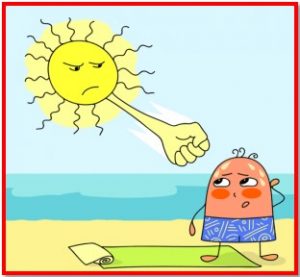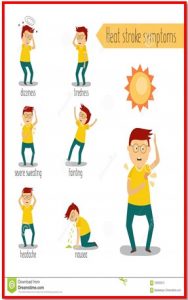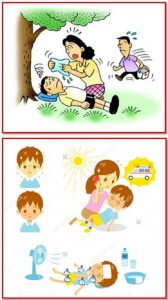HEAT SHOCK
HEAT SHOCK
Heat stroke is a life-threatening condition that occurs when the mechanisms that maintain body temperature are no longer able to work.
There are two forms of heat stroke: classic heat stroke and heat stroke due to physical exertion.
The classic type occurs during the summer when people spend some time in an environment with high temperature or high humidity. This form of heat stroke more often affects elderly patients (poor fluid intake, concomitant chronic diseases, certain drugs in regular therapy) and patients living in poorer living conditions (poor air conditioning).
Heat stroke during physical exertion, as its name suggests, is related to increased physical activity and most often affects healthy and young people.

The symptoms of heat stroke are as follows: disturbance of the state of consciousness (coma, epileptic seizures, delirium), body temperature above 40.5 oC (it can be lower), warm skin, sweating (there is no sweating in classic heat stroke), rapid pulse.

In the treatment of heat stroke, the first measure is:
remove the patient from a high-temperature environment or stop the physical exertion that led to the stroke.
If the person is unconscious, he should first be provided with an open airway.
The patient should be dismantled immediately and started cooling. The best way to cool is to spray the body with water and cool it with a fan. You can also put cold compresses on the body or try an energetic skin massage.
It is also necessary to start with fluid replacement. In patients who are aware of fluid replacement, it is done by taking drinks by mouth. In patients with impaired consciousness, fluid is replenished by infusions.

